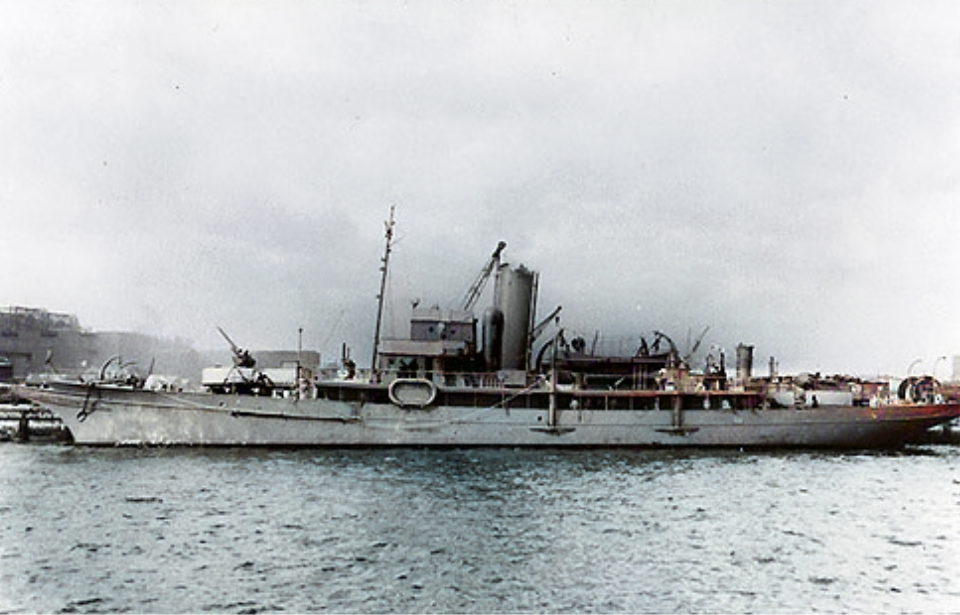The USS Cythera (PY-26) has several distinctions. She started out life as a civilian yacht before being acquired by the US Navy, and later went on to serve in both World War I and II. Her service during the latter, however, was extremely short, as the patrol vessel met her demise at the hands of a German U-boat. Only two sailors survived the attack, and the fate of the ship and her crew remains a mystery.
The USS Cythera (SP-575) was originally a yacht
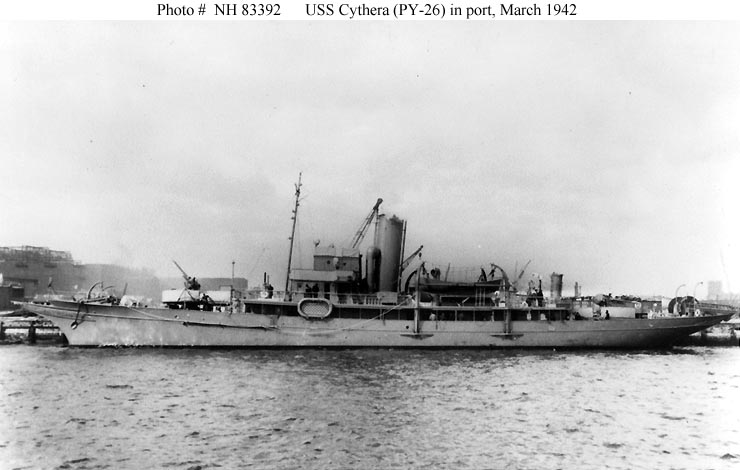
The USS Cythera wasn’t always the property of the US Navy. In fact, she was constructed as a civilian steam yacht back in 1906. Owned by William L. Harkness, she was named Agawa.
When the United States entered the First World War in 1917, the Harkness family donated the vessel to the war effort as part of the section patrol. She was subsequently commissioned with the US Navy as the USS Cythera (SP-575).
Service during the First World War
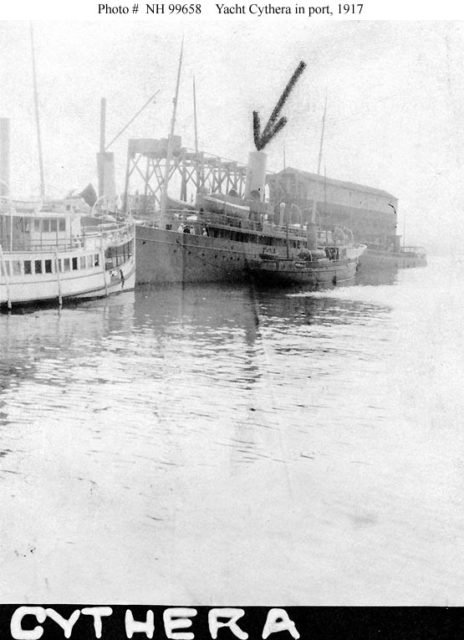
The USS Cythera entered service with the US Navy on October 20, 1917. Throughout WWI, she primarily served as an escort and towing ship for submarine chasers. Leaving New York City at the end of the month, she sailed to Newport, Rhode Island, where she was assigned to the Atlantic Fleet’s Patrol Force.
Departing from Newport on November 1, Cythera traveled to Europe and settled in Gibraltar. While there, she performed patrols and convoy escorts between Mediterranean ports in France, Italy and North Africa. As the conflict came to a close, Cythera was no longer needed. She was decommissioned on March 17, 1919 and returned to the Harkness family.
The USS Cythera‘s (PY-26) short-lived service during World War II
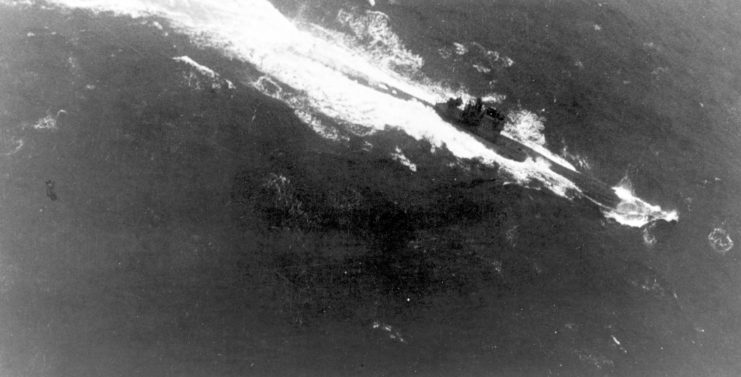
After more than two decades of being decommissioned, the US Navy, again, sought the Harkness family’s yacht for service, this time to aid in WWII. The service purchased the vessel in December 1941 for just one dollar. When recommissioned, the USS Cythera was given the designation PY-26 and successfully converted into a patrol vessel.
Cythera re-entered service on March 3, 1942. On her maiden voyage of the war two months later, she was tasked with escorting the Soviet tanker SS Ashkhabad to Pearl Harbor. While traveling near North Carolina, she was spotted by the German U-boat U-402, which supposedly stalked the vessel for hours before going in for the attack.
The Germans fired three torpedoes at Cythera. The first two missed, traveling beneath her, but the third struck her dead center, splitting the patrol vessel in half and forcing her forward half to rise out of the water. She quickly sank beneath the waves, during which at least two of her own depth charges exploded underwater.
Only two crewmen survived the sinking
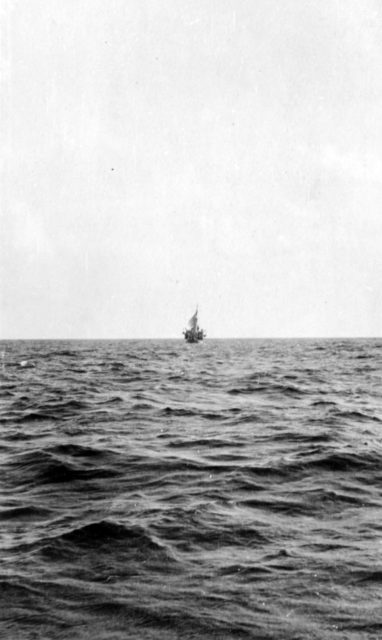
Of the 71 crewmen onboard the USS Cythera, only two are known to have survived the sinking: James M. Brown and Charles H. Carter. Before falling over himself, Brown said he saw at least two others “going over the side” of the vessel as she went down. As he explained:
“I looked around and saw the last part of the ship, the bow-sprit, sink from sight. A minute or so later I saw Carter, PHM1/c, USN, sitting in a life raft about fifty feet away from me. […] We looked around in the water to see if we could see any other survivors. We could see none, and only a very small amount of debris.”
Brown further explained how he and Carter attempted to hide from the U-boat, but that their position was given away by the moonlight and they were picked up. All the while, they never stopped looking for other survivors, with him saying, “While on the conning tower, Carter and I again looked around for other survivors before we were taken below. The German submarine personnel later told us that they had seen no other survivors or bodies.”
It was just the two of them taken as prisoners of war (POWs). This served as the only known instance of Americans being taken by Germans from the East Coast for imprisonment in Germany during the Second World War. Both Carter and Brown survived and were later “returned to military control, liberated, or repatriated.”
A mystery eight decades later
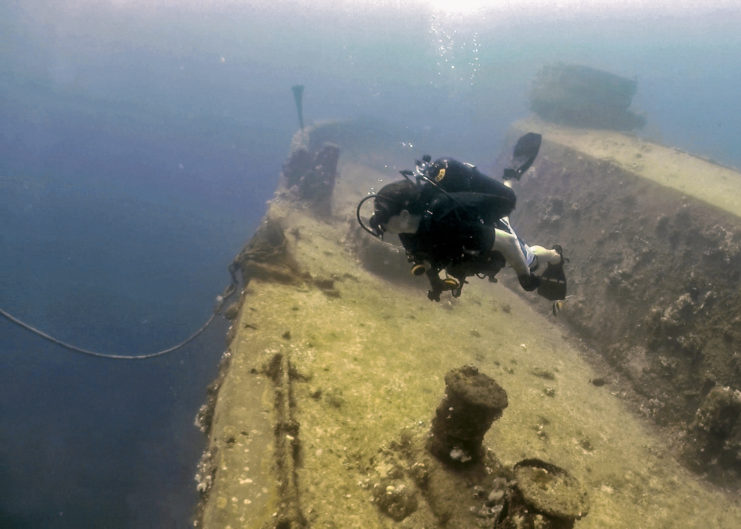
News of the attack and subsequent sinking of the USS Cythera didn’t reach the US Navy until June 1942, when she was overdue to arrive at the Panama Canal. The service assumed the ship must have been lost and let the families of her crew know that “their husbands/sons had been placed in a ‘missing status.'” The whereabouts of the wreck have remained a mystery all these years, as have the fates of the remaining 69 sailors who were serving aboard her.
Cythera has never been found, but the Navy’s Underwater Archaeology Branch would like to locate her and determine if the bodies of her fallen crewmen are still located within. Unfortunately, no one knows the general location of the wreck, so they have no way of knowing where to start looking.
Multiple mapping projects have been conducted to try and identify any military wrecks off the coastline of North Carolina, but, due to the potential 11,000-foot depth, authorities are not actively searching for Cythera. Instead, it’s been agreed that keeping the shipwreck’s location a mystery may be the best option.
If anyone outside of the designated authorities happens upon the wreck, they are best to leave it alone and alert the necessary authorities, as disturbing it would actually be breaking the law. All sunken military vehicles remain the property of the US government, “regardless of location or the passage of time, and are further protected from unauthorized disturbance under the Sunken Military Craft Act.”
More from us: 100 Years After She Sank, The Mystery of USS San Diego’s (ACR-6) Tragic End Was Finally Solved
As the Underwater Archaeology Branch of the US Navy writes:
“These wrecksites are often the final resting places of sailors who paid the ultimate sacrifice in service of the nation, carry significant historical importance, or may contain environmental or public safety hazards such as oil or unexploded ordnance. Accordingly, U.S. Navy ship and aircraft wrecks are in principle to be left in place and undisturbed.”
